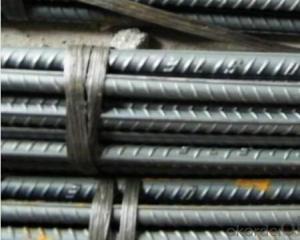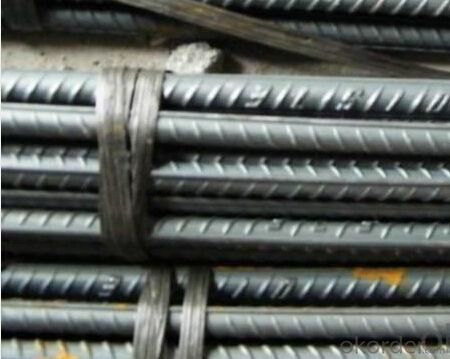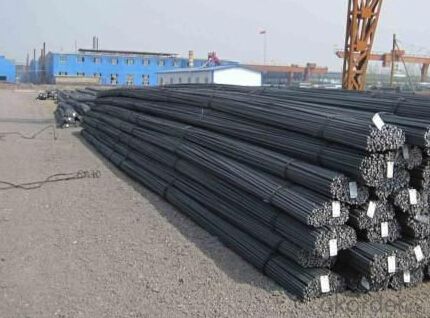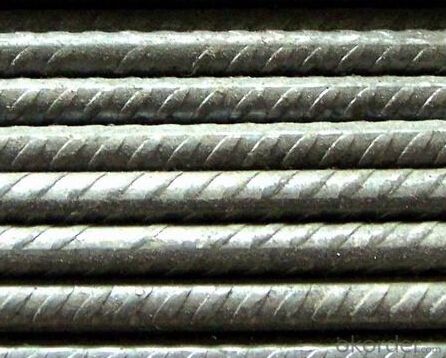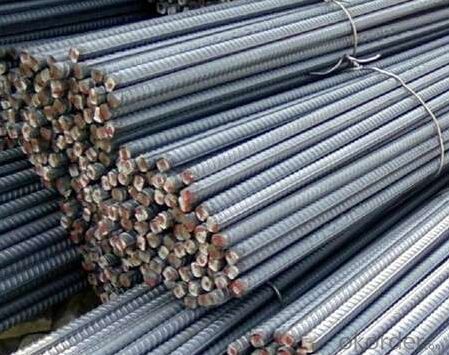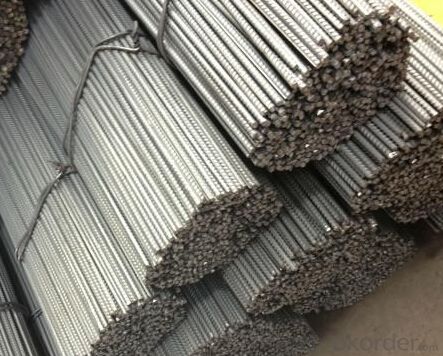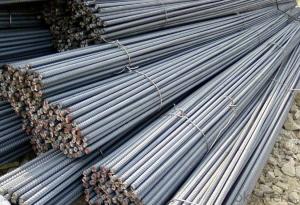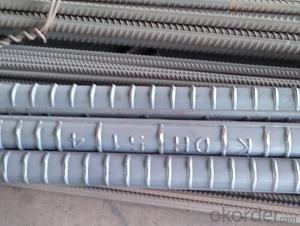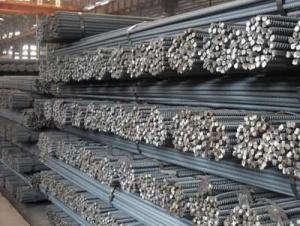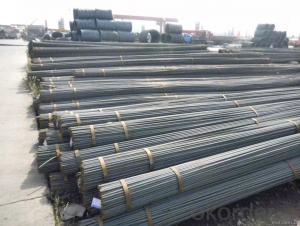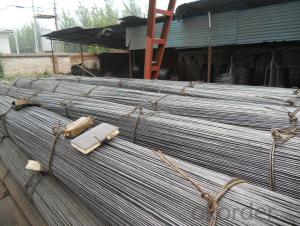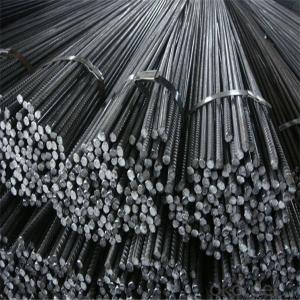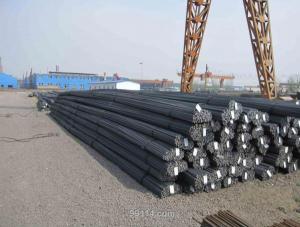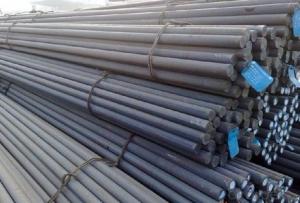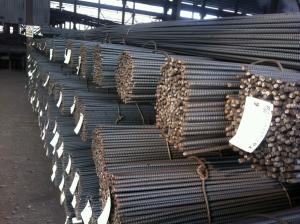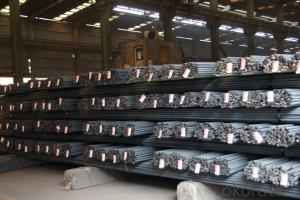Deformed Steel Rebars with High Quality of HRB500
- Loading Port:
- Tianjin
- Payment Terms:
- TT OR LC
- Min Order Qty:
- 100 m.t.
- Supply Capability:
- 5000 m.t./month
OKorder Service Pledge
OKorder Financial Service
You Might Also Like
Product Description:
OKorder is offering Deformed Steel Rebars with High Quality of HRB500 at great prices with worldwide shipping. Our supplier is a world-class manufacturer of steel, with our products utilized the world over. OKorder annually supplies products to European, North American and Asian markets. We provide quotations within 24 hours of receiving an inquiry and guarantee competitive prices.
Product Applications:
Deformed Steel Rebars with High Quality of HRB500 are ideal for structural applications and are widely used in the construction of buildings and bridges, and the manufacturing, petrochemical, and transportation industries.
Product Advantages:
OKorder's Deformed Steel Rebars with High Quality of HRB500 are durable, strong, and resist corrosion.
Main Product Features:
· Premium quality
· Prompt delivery & seaworthy packing (30 days after receiving deposit)
· Corrosion resistance
· Can be recycled and reused
· Mill test certification
· Professional Service
· Competitive pricing
Specifications of Deformed Steel Rebars with High Quality of HRB500
Standard | GB UK USA | HRB335 HRB400 HRB500 G460B, B500A, B500B,B500C GR40, GR60 | |
Diameter | 6mm,8mm,10mm,12mm,14mm,16mm,18mm,20mm, 22mm,25mm,28mm,32mm,36mm,40mm,50mm | ||
Length | 6M, 9M,12M or as required | ||
Packing | Export standard packing: wrapped by wire rod in bundles | ||
Each bundle weight | 2-3MT, or as required | ||
Trade terms | FOB, CFR, CIF | ||
Payment terms | TT payment in advance or Irrevocable LC at sight. | ||
Delivery Detail | within 45 days after received advanced payment or LC. | ||
Brand name | DRAGON | ||
Theoretical weight and section area of each diameter as below for your information:
Diameter(mm) | Section area (mm²) | Mass(kg/m) | Weight of 12m (kg) | Pcs/ton |
6 | 28.27 | 0.222 | 2.664 | 375.38 |
8 | 50.27 | 0.395 | 4.74 | 210.97 |
10 | 78.54 | 0.617 | 7.404 | 135.06 |
12 | 113.1 | 0.888 | 10.656 | 93.84 |
14 | 153.9 | 1.21 | 14.52 | 68.87 |
16 | 201.1 | 1.58 | 18.96 | 52.74 |
18 | 254.5 | 2.00 | 24 | 41.67 |
20 | 314.2 | 2.47 | 29.64 | 33.74 |
22 | 380.1 | 2.98 | 35.76 | 27.96 |
25 | 490.9 | 3.85 | 46.2 | 21.65 |
28 | 615.8 | 4.83 | 57.96 | 17.25 |
32 | 804.2 | 6.31 | 75.72 | 13.21 |
36 | 1018 | 7.99 | 98.88 | 10.43 |
40 | 1257 | 9.87 | 118.44 | 8.44 |
50 | 1964 | 15.42 | 185.04 | 5.40 |
Chemical Composition: (Please kindly find our chemistry of our material based on JIS as below for your information)
JISG3112 SD390 | Chemical Composition | ||||
C | Mn | Si | S | P | |
0.22 | 1.38 | 0.4 | 0.014 | 0.022 | |
Physical capability | |||||
Yield Strength(N/cm²) | Tensile Strength(N/cm²) | Elongation (%) | |||
620 | ≥400 | 21 | |||
The production process of Deformed Steel Rebars with High Quality of HRB500
1-Waling beam furnace
2-Roughing rolling group
3-Intermediate rolling train
4-Finishing rolling group
5-Water-cooling device
6-Walking beam cooler
7-Finishing equipment(including the cold scale shear,short feet collection system,
automatic counting device,bundling machine, collect bench)
Usage and Applications of Deformed Steel Rebars with High Quality of HRB500
Deformed bar is widely used in buildings, bridges, roads and other engineering construction. Big to highways, railways, bridges, culverts, tunnels, public facilities such as flood control, dam, small to housing construction, beam, column, wall and the foundation of the plate, deformed bar is an integral structure material. With the development of world economy and the vigorous development of infrastructure construction, real estate, the demand for deformed bar will be larger and larger..
Packaging & Delivery of Deformed Steel Rebars with High Quality of HRB500
Packaging Detail: products are packed in bundle and then shipped by container or bulk vessel, deformed bar is usually naked strapping delivery, when storing, please pay attention to moisture proof. The performance of rust will produce adverse effect.
Price: Keep lower operating costs so as to offer competitive price for our clients
FAQ:
Q1: Why buy Materials & Equipment from OKorder.com?
A1: All products offered byOKorder.com are carefully selected from China's most reliable manufacturing enterprises. Through its ISO certifications, OKorder.com adheres to the highest standards and a commitment to supply chain safety and customer satisfaction.
Q2: How do we guarantee the quality of our products?
A2: We have established an advanced quality management system which conducts strict quality tests at every step, from raw materials to the final product. At the same time, we provide extensive follow-up service assurances as required.
Q3: How soon can we receive the product after purchase?
A3: Within three days of placing an order, we will begin production. The specific shipping date is dependent upon international and government factors, but is typically 7 to 10 workdays.
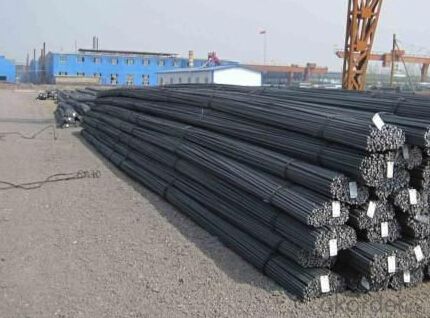
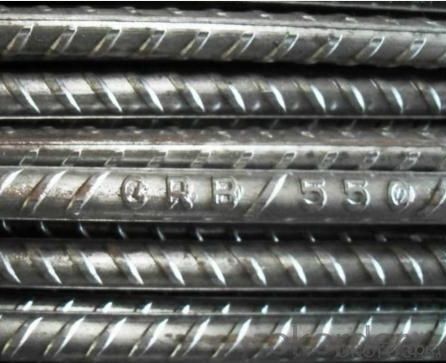
- Q: Can steel rebars be used in water treatment facilities?
- Yes, steel rebars can be used in water treatment facilities. Steel rebars, or reinforcing bars, are commonly used in construction projects to strengthen concrete structures. In water treatment facilities, where concrete is used for various structures such as tanks, basins, and pipelines, steel rebars are often incorporated to provide added strength and durability. Water treatment facilities involve the treatment of water to make it safe for consumption or other purposes. Concrete is a preferred material in these facilities due to its ability to withstand the harsh conditions of water treatment processes, such as exposure to chemicals, high temperatures, and pressure. Steel rebars are essential in reinforcing the concrete structures to ensure they can withstand these demanding conditions. The corrosion resistance of steel rebars is a critical factor to consider when using them in water treatment facilities. Since water treatment facilities often involve the use of chemicals and exposure to moisture, it is important to choose rebars that have appropriate corrosion protection. This can be achieved by using stainless steel rebars or by applying protective coatings to the rebars. It is also worth noting that proper design, construction, and maintenance practices are essential in ensuring the long-term performance of steel rebars in water treatment facilities. Adequate cover thickness, concrete quality, and proper installation techniques are important considerations to prevent corrosion and ensure the rebars provide the desired structural integrity. In conclusion, steel rebars can be effectively used in water treatment facilities to reinforce concrete structures and provide the necessary strength and durability. However, it is important to choose corrosion-resistant rebars and adhere to proper design and construction practices to ensure their long-term performance in these facilities.
- Q: What are the different surface finishes available for steel rebars?
- There are several surface finishes available for steel rebars, including plain, deformed, epoxy-coated, galvanized, and stainless steel.
- Q: How do steel rebars affect the thermal properties of concrete?
- The thermal properties of concrete can be affected in both positive and negative ways by the presence of steel rebars. On the positive side, steel rebars can enhance the overall thermal conductivity of the concrete, enabling more efficient heat transfer and distribution within the structure. This can be advantageous in situations where thermal conductivity is desirable, such as in buildings with radiant heating systems. However, there is a discrepancy in the thermal expansion and contraction characteristics between steel and concrete. This dissimilarity in thermal expansion coefficients can result in the formation of thermal stresses and potential cracks within the concrete, particularly during temperature fluctuations. These cracks have the potential to compromise the structural integrity of the concrete and may necessitate additional reinforcement measures to mitigate their effects. In summary, the inclusion of steel rebars can influence the thermal properties of concrete by augmenting its thermal conductivity and potentially giving rise to thermal stresses and cracks. It is crucial to take these factors into account during the design and construction stages to ensure the desired performance and durability of the concrete structure.
- Q: Can the bars of steel bars be replaced by round steel bars?
- Important stress parts should not be adopted. Reinforced surface made of thread, herringbone bond force is increased to crescent, steel and concrete, reinforced some parts if it is ends with a ribbed design can not bend, it is possible to design directly paste up, it is best to ask the design unit.
- Q: What is the standard length of steel rebars?
- The standard length of steel rebars varies depending on the region and the specific requirements of the project. In the United States, for example, the standard length of steel rebars is commonly 20 feet or 6.1 meters. However, it is important to note that rebars can be cut and customized to different lengths as needed for a particular construction project. Additionally, in some countries or regions, rebars may be available in different standard lengths based on local construction practices and regulations. Therefore, it is essential to consult local codes and specifications to determine the standard length of steel rebars for a specific project.
- Q: What are the factors to consider when choosing the right steel rebar for a project?
- When selecting the appropriate steel rebar for a project, several factors need to be taken into consideration. These factors include the type of project, the structural requirements, the environment, and the specific characteristics of the rebar. One of the key factors to consider is the type of project. Different projects, such as residential buildings, bridges, or highways, have varying structural requirements. The steel rebar selected should be able to withstand the anticipated loads and stresses of the project. Additionally, the size and shape of the rebar should also align with the project's design and specifications. Structural requirements play a vital role in choosing the right steel rebar. This includes considering the required tensile strength, yield strength, and elongation properties. It is crucial to select a rebar that can provide the necessary strength and durability to ensure the structural integrity of the project. The environment in which the project will be located is another significant factor. If the project is exposed to corrosive elements, such as saltwater or chemicals, it is important to choose a rebar with corrosion-resistant properties. This can prevent premature deterioration and maintain the longevity of the structure. Furthermore, the specific characteristics of the rebar need to be evaluated. This includes the grade of the steel, which determines its strength and ductility. Different grades, such as ASTM A615 or ASTM A706, have distinct properties that suit various applications. The surface finish of the rebar, such as plain or deformed, also affects its bonding ability with concrete. Other factors that should be taken into account include the availability and cost of the steel rebar. It is crucial to ensure that the selected rebar is readily available and can be obtained in the required quantities and sizes. Additionally, the cost of the rebar should align with the project's budget constraints. In conclusion, when choosing the right steel rebar for a project, it is essential to consider factors such as the type of project, structural requirements, environmental conditions, and specific characteristics of the rebar. By carefully considering these factors, one can select the most suitable steel rebar that ensures the durability and longevity of the structure.
- Q: Can steel rebars be used in the construction of airport runways and taxiways?
- Yes, steel rebars can be used in the construction of airport runways and taxiways. Steel rebars provide strength and reinforcement to the concrete used in these structures, ensuring their durability and ability to withstand heavy aircraft traffic.
- Q: What are the different types of steel rebars used in foundation constructions?
- There are several types of steel rebars used in foundation constructions, including carbon steel rebars, epoxy-coated rebars, galvanized rebars, and stainless steel rebars.
- Q: Can steel rebars be used in renovation or retrofitting projects?
- Yes, steel rebars can be used in renovation or retrofitting projects. Steel rebars are commonly used in construction projects to reinforce concrete structures, providing strength and durability. In renovation or retrofitting projects, where existing structures need to be strengthened or modified, steel rebars can be utilized to enhance the structural integrity and ensure the safety of the building.
- Q: How are steel rebars bent during construction?
- Steel rebars are bent during construction using specialized tools and equipment. The process involves several steps to ensure the rebars are bent accurately and to the required specifications. First, the rebars are selected based on the design and structural requirements of the project. The rebars are typically made of carbon steel and come in various sizes and lengths. They are usually straight and need to be bent according to the specific shape and dimensions required for the construction. To bend the rebars, construction workers use a bending machine or a hydraulic bender. These machines have a set of rollers or dies that apply pressure to the rebar, bending it into the desired shape. The machine is adjusted to the required angle and radius of the bend. Before bending, the rebars are marked with measurements and reference points to ensure accuracy. The operator places the rebar into the bending machine, aligning it with the reference points. The machine is then activated, and the rollers or dies apply force to the rebar, gradually bending it to the desired shape. For complex bends or shapes, multiple bends may be required. In such cases, the rebar is bent incrementally, with the operator adjusting the machine after each bend to achieve the desired shape. It is important to note that rebars have specific bending limits to prevent them from breaking or losing their structural integrity. Construction workers must adhere to these limits and ensure that the rebars are not over-bent, as it could compromise the strength and safety of the structure. Overall, the process of bending steel rebars during construction involves using specialized equipment, careful measurements, and skilled operators to achieve the required shapes and dimensions for the project.
Send your message to us
Deformed Steel Rebars with High Quality of HRB500
- Loading Port:
- Tianjin
- Payment Terms:
- TT OR LC
- Min Order Qty:
- 100 m.t.
- Supply Capability:
- 5000 m.t./month
OKorder Service Pledge
OKorder Financial Service
Similar products
Hot products
Hot Searches
Related keywords
